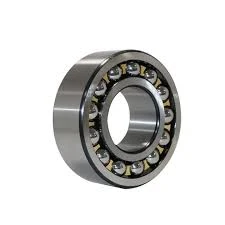
Nov . 22, 2024 02:01 Back to list
cylindrical roller bearing axial load
Understanding Axial Loads in Cylindrical Roller Bearings
Cylindrical roller bearings are widely used components in various mechanical systems due to their ability to support heavy radial loads while maintaining low friction. One critical aspect of the performance of these bearings is their capacity to handle axial loads, which are forces that act parallel to the axis of the bearing. This article will delve into the nature of axial loads in cylindrical roller bearings, their implications on performance, and important design considerations.
The Basics of Cylindrical Roller Bearings
Cylindrical roller bearings consist of an inner ring, outer ring, and cylindrical rollers that are positioned between the rings. The design allows for high radial load capacity due to the large contact area between the rollers and raceways. However, when it comes to axial loads, the situation is different. While cylindrical roller bearings are engineered primarily for radial loads, they can accommodate a limited amount of axial load under certain conditions.
Axial Load Capacity
Axial load capacity in cylindrical roller bearings is determined by various factors, including the bearing design, materials used, lubrication, and operational conditions. It is crucial for engineers and designers to understand that while these bearings can support some axial forces, their primary function is to handle radial loads. The axial load capacity is typically much lower compared to what the bearing can manage radially.
To quantify the axial load capacity, manufacturers often provide specific ratings that indicate maximum allowable axial loads for each bearing type. These ratings take into consideration various operational parameters, including speed, temperature, and lubrication conditions. Exceeding these ratings can lead to premature wear, overheating, and eventual failure of the bearing.
Implications of Axial Loads on Performance
cylindrical roller bearing axial load

When axial loads are applied to cylindrical roller bearings, they can lead to several performance implications. One significant effect is the alteration of load distribution among the rolling elements. Such disruptions can cause uneven wear patterns, resulting in reduced service life and efficiency of the bearing. Additionally, excessive axial loads can lead to increased heat generation, which negatively affects lubrication and may contribute to failure.
Bearings subjected to high axial loads may also experience net elevating vibrations, which can be damaging to both the bearing and the machinery in which it operates. Vibration can lead to misalignment, further stressing the bearing and potentially causing catastrophic failure. Therefore, it is essential to monitor the axial load conditions to ensure lasting performance.
Design Considerations and Solutions
To accommodate axial loads effectively when using cylindrical roller bearings, several design strategies can be employed. One common approach is to install additional bearing components, such as thrust washers or other types of bearings specifically designed to handle axial loads. This combination allows for the efficient management of both radial and axial forces within the system.
Another solution involves choosing bearings that are specifically constructed for mixed loading conditions. Certain bearing designs feature integral flanges on the inner or outer rings to better accommodate axial forces. Selecting the appropriate bearing based on load types and operational requirements is essential for optimal performance.
Conclusion
In summary, while cylindrical roller bearings are primarily designed for radial loads, it is important to consider the implications of axial loads on their performance. Understanding the limits of axial load capacity and employing strategic design considerations can significantly enhance bearing performance and longevity. Engineers must carefully evaluate load conditions and choose their components accordingly to ensure efficient, reliable machinery operation. By doing so, they can mitigate risks and maintain the integrity of their mechanical systems.
Latest news
-
Premium Deep Groove Ball Bearings | High Speed & Reliability
NewsAug.29,2025
-
Durable Scaffolding Clamps - Secure & Reliable Tube Connectors
NewsAug.28,2025
-
Common Failures in Thrust Ball Bearings and Solutions
NewsAug.22,2025
-
How Tapered Roller Bearings Can Take Shock Loads
NewsAug.22,2025
-
Angular Bearings in High-Precision Spindles
NewsAug.22,2025
-
The Impact of Misalignment on Cylindrical Roller Bearing Performance
NewsAug.22,2025
